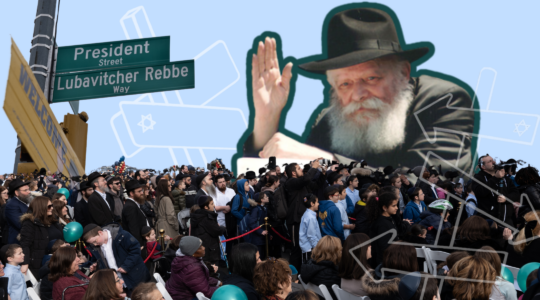The Jews of Cáceres must have been in absolutely terrific shape.
That was my thought upon scaling the vertiginous steps that lead from the Plaza Mayor in that Spanish city to the medieval Jewish quarter. For roughly 250 years — between the Christian reconquest of Cáceres in 1229, and the expulsion of non-Christians in the late 1400s — a Jewish community of cobblers, tailors, metalsmiths, doctors and rabbis crossed the plaza, passed under the shadow of the Arco de la Estrella and entered the walled city.
Inside the Roman-era walls, an austere labyrinth of steps, 15th-century palaces, more steps, quiet plazas, ancient arches and even more steps lead to the Barrio San Antonio, where several hundred Jews once lived.
They climbed those steps daily without benefit of the modern stimulants we rely on: coffee, chocolate, pizza with tomatoes. All of those ingredients come from the New World, which was unknown during the Sephardic Golden Age.
Back then, it’s likely they enjoyed the flavors you still find in traditional Cáceres shops — chestnuts, honey, figs and cherries, grown on local hillsides and convent gardens and prepared in everything from pastry to liqueur.
They are recipes that, like Sephardic Jewry, predate Spain itself, which only came into formal statehood when the Sephardim of Iberia were cast into Mediterranean exile — in the late 1400s, around the same time Columbus was discovering coffee beans in the Caribbean.
But Cáceres was a civilization way, way before that. In the Cuevas de Maltravieso, just outside the city center, you can see cave paintings from 27,000 years ago, the late Paleolithic period. Many centuries later, Cáceres was an outpost of the Roman province of Lusitania; the oldest remaining structures were built between 200 and 400 C.E.
For roughly a half-millennium, Cáceres was controlled by Moors, who rebuilt the city they conquered with lavish palaces and more than 30 towers that remain from the Caliphate.
All of which suggests that Cáceres was once far more strategic than it is today. Modern Cáceres, the capital of Spain’s Extremadura region, is centrally located only if you’re driving from Madrid to Lisbon: it lies about halfway, amid the sierras and plateaus of Spain’s rugged, sparsely populated far West.
Today Cáceres attracts pilgrims of various stripes, from Catholics on the Camino de Santiago to Jews exploring a stop on the Spanish Camino de Sefarad, the Jewish heritage itinerary route. In a municipal territory nearly three times larger than Madrid, it has just a fraction of the population (about 100,000).
It may well have more palaces per capita, too. Grand stone villas and turreted towers give medieval Cáceres a distinctly regal feel; breaks in the Roman wall offer sweeping views over terracotta rooftops. One Renaissance-era gem, the Palacio de la Isla, was built on the site of a former synagogue, and you can still see Stars of David and Hebrew inscriptions in the courtyard.
Another synagogue from the Middle Ages, later Catholicized as the Hermitage of San Antonio, is tucked into the Barrio de San Antonio. Its façade, a mix of stucco and stonework, is typical of the whitewashed back alleys in this sleepy quarter, where flowerpots and bougainvillea offer bursts of color.
Greenery is scarce in the “casco antiguo,” or historic core, but an oasis awaits at the edge of the Jewish quarter. On a steep, sandy hillside is a garden known as the Olivar de la Judería (Jews’ olive grove), surrounded by houses once occupied by Sephardim.
Nearby are other clues to a Jewish past: the plaque in Plaza de Pereros, which recalls a poignant Sephardic appeal to Queen Isabella; several Stars of David built into the cobblestones of Calle Quebrada, commemorating the onetime residents of that district.
Only 14 years before the Jews’ final expulsion, the community was forcibly relocated to a “new Jewish quarter,” outside the walled city. To trace their steps, cross the Plaza Mayor to the opposite side from the Arco de la Estrella into the dark, shadowy Calle del General Ezponda.
Here, in contrast to the turreted esplanades of the walled city, narrow walls block out the sun amid a flutter of laundry lines. Within a few blocks, medieval Cáceres gives way to the prosaic cement high-rises of the modern city.
The “new Jewish quarter,” as it was known, was a comedown both literally and metaphorically, but it didn’t last long. The sharp decline of Iberian Jewry mirrored the slower decline of Spain itself, leaving behind towers and turrets from a lost Golden Age.
The New York Jewish Week brings you the stories behind the headlines, keeping you connected to Jewish life in New York. Help sustain the reporting you trust by donating today.




